The Central Propaganda Department issued a propaganda outline to celebrate the 95th anniversary of the founding of Vietnam Trade Union (July 28, 1929 - July 28, 2024).

I. OVERVIEW OF THE BIRTH OF THE WORKING CLASS AND THE RED ASSOCIATION - THE PREDECESSOR OF THE VIETNAM GENERAL CONFEDERATION OF LABOR
1. The birth of the Vietnamese working class
The Vietnamese working class was born and developed in conjunction with the colonial exploitation of the French colonialists in the late 19th century. Before the French colonialists invaded, Vietnamese society was still a feudal society with two basic classes: the feudal landlord class and the peasant class; maintaining a backward economy based mainly on small-scale agricultural production, the industrial and service economic base was not yet developed. After the invasion and pacification were basically completed, the French colonialists immediately embarked on the first colonial exploitation on a nationwide scale. Breweries, textile factories, electricity and water factories, railways, mines, rubber and coffee plantations... were born one after another and with that the first Vietnamese workers were formed. They were farmers who had all their land taken away, and craftsmen who went bankrupt and were forced to work in French capitalist enterprises. According to statistics before World War I, the total number of workers in Vietnam was about 100,000 people, mainly concentrated in several large cities such as: Hanoi, Saigon - Cho Lon, Hai Phong and the Quang Ninh mining area...
After World War I, to make up for the losses, the French colonialists carried out a second colonial exploitation on a larger scale and at a faster pace than before. They increased investment in mining, transportation, plantations, processing industry, textiles, etc. to increase plunder and exploitation in the colonies. During this period, the number of Vietnamese workers grew rapidly, reaching over 220,000 people in early 1929.
Under the harsh oppression and exploitation of colonialism and feudalism, the Vietnamese working class united, organized and gathered to fight for their rights, leading to the formation of Friendship Associations and Mutual Aid Associations in factories and enterprises. At the end of 1920, the patriotic worker Ton Duc Thang campaigned to establish the Ba Son Trade Union in Saigon, opening the movement to fight for class liberation and national liberation.
2. The birth of the Red Trade Union of Tonkin - the predecessor of today's Vietnam Trade Union
The formation and development of the Red Union of Tonkin is closely linked to the revolutionary activities of leader Nguyen Ai Quoc in the early years of the 20th century. He joined the British Overseas Trade Union when operating in London in the years 1914 - 1917; joined the Metal Union of the 17th district of Paris in 1919. Leader Nguyen Ai Quoc was the one who laid the theoretical basis and ideological foundation for the establishment of the Vietnamese Trade Union. In his work "The Revolutionary Path", he instructed: "Organizing a Trade Union is first of all for workers to come together to have sympathy; secondly, to study with each other; thirdly, to improve the way workers live to make it better than it is now; fourthly, to protect the rights of workers; fifthly, to help the nation, to help the world". In June 1925, he founded the Vietnam Revolutionary Youth Association in Guangzhou, China and directly taught to improve political theory for students.
During the years 1925 - 1928, under the leadership of the Vietnam Revolutionary Youth Association, the "Proletarianization" movement penetrated deeply into factories, enterprises, and mines to propagate and mobilize workers to actively participate in the struggle movement. The birth of the first Communist Party cell (March 1929), especially the birth of the Indochinese Communist Party (June 1929) was the result of the process of mobilizing and organizing workers, in which Nguyen Duc Canh was one of the founders and played an important role. In his position as a member of the Provisional Central Executive Committee, Nguyen Duc Canh was assigned by the Provisional Central Committee to be in charge of mobilizing workers.
Realizing the important role of the Trade Union and workers in the struggle against imperialism, exploitation, and to protect workers' rights, Nguyen Duc Canh and his comrades actively organized the workers' movement, first of all the workers' movement in Bac Ky, to establish the Trade Union. On July 28, 1929, the first Congress of the Red General Labor Union of Bac Ky opened, chaired by comrade Nguyen Duc Canh. The Congress decided to establish the Red General Labor Union of Bac Ky, approved the Charter and the organization system of the Union, published the newspaper "Labor" and the magazine "Red Union", elected the provisional Central Executive Committee with comrade Nguyen Duc Canh as Chairman. The establishment of the Red General Labor Union of Bac Ky was a brilliant milestone in the history of the workers' movement and the Trade Union of Vietnam. From then on, the Vietnamese working class had a large revolutionary organization, operating with principles and purposes, leading the movement.
II. WORKERS' MOVEMENT AND TRADE UNION ACTIVITIES THROUGH PERIODS OF THE VIETNAMESE REVOLUTION
1. The period of struggle for power (1930 - 1945)
On February 3, 1930, the Communist Party of Vietnam was founded. Under the leadership of the Party, the Red General Confederation of Labor gathered the workers, the main force of the Vietnamese revolution, creating the Soviet - Nghe Tinh climax of 1930 - 1931. At the end of 1931, the struggle movement of the Vietnamese working class was brutally suppressed by the French colonialists, most of the Party and Red Confederation cadres were arrested by the enemy, causing the connection between the Party and the masses, between the Red Confederation of Labor and the workers' movement to be almost interrupted. In that condition, despite the strict control of the French colonialists, the Red Confederation of Labor still actively propagated, mobilized workers, and developed the organization. From 1932 - 1936, the revolutionary movement throughout the country began to recover.
From 1936 to 1939, the Red Trade Union changed its name to the Friendship Union and entered a period of semi-public operation. Thanks to its flexible organization, suitable to the situation, the workers' movement during this period continued to develop strongly. In September 1939, World War II broke out, the French colonialists surrendered and compromised with Japanese fascists to brutally suppress the anti-war democratic movement of our people, eliminating union freedoms. In that situation, the Friendship Union had to retreat into secret operations and took the name "Anti-Imperialist Workers' Association", in 1941 it changed to "National Salvation Workers' Association" as the core for the activities of the Viet Minh organization.
Under the leadership of the Party, the Trade Union is truly the center of solidarity of Vietnamese workers. With over 200,000 people in 1945, the Trade Union members became the core force that made the August Revolution of 1945 successful, giving birth to the Democratic Republic of Vietnam - the first Workers' and Peasants' State in Southeast Asia.
2. The period of resistance against French colonialism (1945 - 1954)
After the successful August Revolution in 1945, under the leadership of the Party, in March 1946, the Conference of National Salvation Workers in the North, Central and Southern regions decided to unify the organization nationwide into the "National Salvation Workers' Association". In June 1946, at the Conference of National Salvation Trade Union cadres, the name of the "National Salvation Workers' Association" was changed to "Trade Union". On July 20, 1946, at the Hanoi Opera House, the "Vietnam General Confederation of Labor" was officially established and recognized as an official member of the World Federation of Trade Unions in 1949.
In the early years of the country's independence, the Trade Union and the Vietnamese working class made many important contributions to protecting and promoting the achievements of the August Revolution, actively participating in the first general election to elect the National Assembly of the Democratic Republic of Vietnam. In the face of the French colonialists' ambition to invade our country once again, the capital's suicide squads, with workers as the core, fought with a courageous and heroic spirit.
Carrying out the task of both resistance and national construction, the Vietnam General Confederation of Labor mobilized workers, civil servants, and laborers to focus on building factories, workshops, and producing weapons and military equipment; overcoming difficulties and enthusiastically competing in labor to serve the resistance. In the Viet Bac resistance zone, from January 1 to 15, 1950, the 1st Congress of the Vietnam Trade Union set the goal: "Mobilize workers and civil servants nationwide, especially workers in the Military Industry sector, to produce many weapons and equipment to serve the resistance against French colonialism until victory" . The Congress elected the Executive Committee of the Vietnam General Confederation of Labor consisting of 21 official members and 04 alternate members. Comrade Hoang Quoc Viet, member of the Central Standing Committee, was elected Chairman, and comrade Tran Danh Tuyen was elected General Secretary.
In February 1951, the Second Party Congress set out the task of promoting economic development to serve the general counter-offensive, leading the resistance war to complete victory. Implementing the Resolution of the Second Party Congress, the Trade Union mobilized workers to enthusiastically produce and participate in managing and building enterprises. This was a major change in the ideological awareness and operation methods of the Trade Union. From here, in state-owned enterprises, the Trade Union represented workers in participating in Enterprise Committees, contributing directly to production and business management, developing the resistance economy in all aspects. In the liberated areas, the Trade Union launched workers to "Competition in production, competition in construction", "Technical innovation, promoting initiatives, and improving professions". The movement was organized and directed relatively closely, implementing democracy in production management.
In the final stage of the resistance war, the Vietnam General Confederation of Labor gathered, united, promoted the pioneering role of the working class, overcame countless difficulties, hardships, sacrifices, fought steadfastly, and contributed with the army and people of the whole country to create the resounding victory of Dien Bien Phu (1954) that shook the world, ended gloriously the 9-year resistance war against French colonialism, and restored peace in Indochina.
3. The period of resistance against America (1954 - 1975)
After the victory of Dien Bien Phu, Vietnam was temporarily divided into two regions, the North was completely liberated and embarked on the construction of socialism, the South was still under the domination of American imperialism.
Responding to the requirements of the new situation, the Conference of the Executive Committee of the Vietnam General Confederation of Labor (1st term) held in August 1954 identified the key task as "It is necessary to mobilize and organize the mass of workers in urban areas into a strong force to be the best and most reliable support for the government to carry out the work of receiving, restoring production, and maintaining security and order in the city".
In the North, the country's reconstruction continued to be fraught with difficulties for the workers. With the responsibility of being the masters of the country, the contingent of workers and employees promoted production, practiced thrift, and fought against waste. Thanks to that, in a short time, production activities at industrial establishments were restored. Through the implementation of the first 5-year plan, typical examples of the patriotic emulation movement of the working class were spread, such as "Song Duyen Hai", "Hop Xa Thanh Cong", "Ba Quyet Dem"... many outstanding workers and employees were awarded the title of Labor Hero by the Party and the State, and were shining examples in studying, working, producing, and fighting.
In the South, the workers' and trade unions' movements operated under extremely difficult conditions. The US imperialists and their Ngo Dinh Diem lackeys tried their best to terrorize and suppress them. Industries and handicrafts were stagnant, and the lives of workers and workers were difficult. Faced with this situation, the Party directed the bases in the inner city and on the plantations to find every way to stay close to the land and the people, develop their forces, and organize the workers to fight.
On November 5, 1957, the President of the Democratic Republic of Vietnam signed Decree No. 108-SL/L10 promulgating the Trade Union Law, creating a legal basis, enhancing the position of the Trade Union organization, and consolidating the leadership role of the working class in the new situation. The victory of the economic restoration, socialist transformation and initial economic and cultural development created important premises to contribute to building and gradually moving the North towards socialism, while fighting to unify the country. This achievement had important contributions from the working class and the Vietnam Trade Union organization.
Faced with new requirements, the 2nd Congress of the Vietnam General Confederation of Labor held in Hanoi from February 23 to 27, 1961 decided to change the name of the "Vietnam General Confederation of Labor" to the "Vietnam General Confederation of Labor". The Congress set the goal: "To mobilize cadres, workers, and civil servants to compete in labor production, to build socialism in the North with the spirit of each person working twice for the beloved South, contributing to the struggle for national reunification". The Congress elected the Executive Committee of the Vietnam General Confederation of Labor consisting of 55 official members and 10 alternate members. Comrade Hoang Quoc Viet, member of the Party Central Committee, was elected Chairman; Comrade Tran Danh Tuyen, alternate member of the Party Central Committee, was elected General Secretary.
The 3rd Congress of the Vietnam General Confederation of Labor , held from February 11 to 14, 1974 in Hanoi. The Congress set the goal that "All levels of the Trade Union must launch a movement to compete in production labor, thrift, and build socialism with labor productivity, work efficiency, service, and participation in combat, determined to liberate the South and unify the country". The Congress elected the Executive Committee of the Vietnam General Confederation of Labor consisting of 72 members, and the Secretariat consisting of 9 members. Comrade Ton Duc Thang, President of the Democratic Republic of Vietnam, was elected Honorary President of the Vietnam General Confederation of Labor. Comrade Hoang Quoc Viet, member of the Party Central Committee, was elected President; Comrade Nguyen Duc Thuan was elected Vice President. cum General Secretary. Comrades Nguyen Cong Hoa and Truong Thi My were elected Vice Presidents of the Vietnam General Confederation of Labor.
The Vietnam General Confederation of Labor participated in the development of a number of additional and revised regimes and policies on labor, wages and bonuses. The Federation of Labor Unions of provinces and cities signed a joint resolution with the authorities at the same level on the organization and implementation of regimes and policies for employees. Many grassroots unions promptly encouraged employees to compete in labor and production, striving to complete the assigned plans. The implementation of labor safety and industrial hygiene rules has been better implemented, improving working conditions for employees.
In 1965, the Southern Liberation Trade Union Federation was established and was constantly consolidated and developed, both organizing workers in the cities to fight and mobilizing workers in the liberated areas to step up production to serve the fight. During the 1968 Mau Than Spring General Offensive and Uprising and the Ho Chi Minh Campaign, the Liberation Trade Union mobilized workers in urban areas to rise up simultaneously, coordinating with the armed forces to destroy the enemy, contributing with the entire Party, the entire people, and the entire army to completely liberate the South and unify the country.
4. Period of building socialism (1975 - 1986)
After the great victory in the spring of 1975, the country was unified and the whole country moved towards socialism, creating basic conditions for the unification of trade union organizations nationwide. Implementing the Politburo's Directive, from January 1976, the Vietnam General Confederation of Labor and the Southern Liberation Trade Union Federation began preparing conditions for the unification of the trade union organization of the Vietnamese working class. On June 6, 1976, the National Trade Union Conference held in Ho Chi Minh City decided to unify the trade unions of the North and South into the "Vietnam General Confederation of Labor".
The 4th Congress of the Vietnam General Confederation of Labor , held from May 8 to 11, 1978, in Hanoi, set the goal: "Mobilizing the working class and other workers to compete in labor production, economic development, and industrialization throughout the country". The Congress elected the Executive Committee of the Vietnam General Confederation of Labor consisting of 155 members and the Secretariat consisting of 12 members. Comrade Nguyen Van Linh, Politburo member was elected as Chairman; Comrade Nguyen Duc Thuan, member of the Party Central Committee, was elected as Vice Chairman and General Secretary; Comrade Nguyen Ho was elected as Vice Chairman of the Vietnam General Confederation of Labor.
In 1981-1982, the Union conducted many campaigns to disseminate widely to workers and civil servants about the situation and tasks of the country, about the guidelines and policies, especially the economic policies of the Party and the State. Along with political education, the Union made great efforts to maintain the movement of supplementary cultural, technical and professional education; promoted mass cultural, artistic and sports activities; the Union's press and publishing work made new progress.
The 5th Congress of the Vietnam General Confederation of Labor held from November 16 to 18, 1983, in Hanoi, determined: To promote the emulation movement in labor production among workers and civil servants; to launch the emulation movement of workers and civil servants serving agriculture, gradually moving agriculture towards large-scale socialist production; to restore social order on the circulation and distribution front... The Congress elected the Executive Committee of the Vietnam General Confederation of Labor consisting of 155 members, and the Secretariat consisting of 13 members. Comrade Nguyen Duc Thuan, member of the Party Central Committee, was elected as Chairman; Comrade Pham The Duyet, member of the Party Central Committee, was elected as Vice Chairman and General Secretary. The Congress agreed to take July 28, 1929, the founding date of the Northern Red General Confederation of Labor, as the Founding Day of the Vietnam General Confederation of Labor. In February 1987, comrade Pham The Duyet, member of the Party Central Committee, was elected President of the Vietnam General Confederation of Labor; comrade Vu Dinh was elected Vice President, and comrade Duong Xuan An was elected General Secretary.
The emulation movements in production, promotion of initiatives, and technical improvements among workers have created positive changes, many advanced models and new factors have been formed, contributing greatly to the cause of building and defending the Fatherland. The Union focuses on developing union members, the number of union members and grassroots unions is increasing. In addition, the Union also participates in the field of social insurance, labor protection, and requests the State to supplement allowances for sickness, maternity, work accidents, hardship allowances, etc. Rest regimes, sightseeing, and cultural, artistic and sports activities are maintained and developed. On the occasion of the 55th anniversary of the founding of the Vietnam General Confederation of Labor (July 28, 1929 - July 28, 1984), the State awarded the Vietnam General Confederation of Labor the Gold Star Order - the most noble order of the State of Vietnam.
5. Period of national renewal (1986 - 2023)
In the context of the country's renovation and gradual integration, the 6th Congress of the Vietnam General Confederation of Labor, held from October 17 to 20, 1988 in Hanoi, set the goal: "Implementing the Party's renovation policy for jobs, life, democracy and social justice". The Congress decided to change the name of "Vietnam General Confederation of Labor" to "Vietnam General Confederation of Labor". The Congress elected the Executive Committee of the Vietnam General Confederation of Labor consisting of 155 members and the Secretariat consisting of 15 members. Comrade Nguyen Van Tu, member of the Party Central Committee, was elected Chairman; Comrade Cu Thi Hau, member of the Party Central Committee, was elected Vice Chairman; Comrade Duong Xuan An was elected Vice Chairman . In the early years of the renovation period, the working class and the Vietnam Trade Union made many contributions to the implementation of the 5-year plan (1986 - 1990), gradually helping our country escape from difficulties and stabilize the lives of the people and workers.
The 7th Congress of the Vietnam Trade Union , held from November 9 to 12, 1993 in Hanoi, emphasized the requirement of "Renewing the organization and operation of the Trade Union, contributing to building and protecting the Fatherland, caring for and protecting the interests of workers". The Congress elected the Executive Committee of the Vietnam General Confederation of Labor consisting of 125 members, the Presidium consisting of 15 members. Comrade Nguyen Van Tu, member of the Party Central Committee, was re-elected as Chairman; Comrade Cu Thi Hau, member of the Party Central Committee, was elected as Vice Chairman; Comrades Hoang Minh Chuc, Nguyen An Luong, Hoang Thi Khanh was elected Vice President of the Vietnam General Confederation of Labor.
The 8th Congress of the Vietnam General Confederation of Labor held from November 3 to 6, 1998 emphasized "For the cause of industrialization and modernization of the country, for jobs, life, democracy and social justice, building a strong working class and trade union organization". The Congress elected the Executive Committee of the Vietnam General Confederation of Labor consisting of 145 members, the Presidium consisting of 17 members. Comrade Cu Thi Hau, member of the Party Central Committee was elected as President; comrades Nguyen An Luong, Dang Ngoc Chien, Do Duc Ngo, Nguyen Dinh Thang was elected Vice President of the Vietnam General Confederation of Labor.
The 9th Congress of the Vietnam General Confederation of Labor held from October 10 to 13, 2003 in Hanoi, determined to "Build a strong working class and trade union organization, care for and protect the legitimate and legal rights of workers and employees, contribute to strengthening national unity, and successfully carry out the cause of industrialization and modernization of the country". The Congress agreed on the number of members of the Executive Committee of the Vietnam General Confederation of Labor to be 155, at the Congress elected 150 members, and elected a Presidium of 19 members. Comrade Cu Thi Hau, member of the Party Central Committee, was elected as President; comrades Dang Ngoc Tung, Nguyen Hoa Binh, Nguyen Dinh Thang, Do Duc Ngo, and Dang Ngoc Chien were elected as Vice Presidents. In December 2006, comrade Dang Ngoc Tung, member of the Party Central Committee, was elected as President. September 2007 comrades Hoang Ngoc Thanh, Mai Duc Chinh, Nguyen Thi Thu Hong, Nguyen Van Ngang was elected Vice President of the Vietnam General Confederation of Labor.
The 10th Congress of the Vietnam General Confederation of Labor , held from November 2 to 5, 2008, in Hanoi, the Congress determined the goal: "Continue to innovate the content and methods of operation of trade unions at all levels; focus on the grassroots, take the grassroots as the main area of operation, take union members and employees as the target of mobilization; strongly shift trade union activities into organizing and implementing the function of representing and protecting the legitimate and legal rights and interests of union members and employees; build harmonious, stable and progressive labor relations; contribute to promoting the cause of socio-economic development of the country". The Congress agreed that the number of Executive Committee of the Vietnam General Confederation of Labor is 165 members, at the Congress elected 160 members. Comrade Dang Ngoc Tung, member of the Party Central Committee was elected as Chairman; Comrades Nguyen Hoa Binh, Hoang Ngoc Thanh, Mai Duc Chinh, Nguyen Thi Thu Hong, Nguyen Van Ngang were elected as Vice Chairmen.
The 10th term of the Vietnam General Confederation of Labor operates in the context of the Vietnamese working class constantly growing in quantity and quality, becoming the leading force in the cause of industrialization and modernization of the country. This is also the term to implement Resolution No. 20-NQ/TW dated January 28, 2008 of the Party Central Committee (10th tenure) on "Continuing to build the Vietnamese working class in the period of accelerating industrialization and modernization of the country". The Resolution demonstrates the political determination of the Party and State in building the working class, meeting the needs and aspirations of millions of workers nationwide. The activities to implement Resolution 20-NQ/TW have received the attention and direction of Party committees at all levels, along with the synchronous participation of the entire political system and the Trade Union, creating changes during the term of operation, especially in performing the task of representing and protecting the legitimate and legal rights and interests, and improving the material and spiritual life of union members and workers.
The 11th Congress of the Vietnam General Confederation of Labor , held from July 27 to 30, 2013, set the goal of "Continuing to innovate the content and methods of trade union activities towards union members and workers, for the sustainable development of the country; focusing on the grassroots, performing well the function of caring for the lives, representing and protecting the legitimate and legal rights and interests of union members and workers; effectively participating in state management and socio-economic management; improving the quality of propaganda, mobilization, education and organizing patriotic emulation among union members and workers; promoting the development of union members, establishing grassroots unions, taking care of training and fostering union cadres, building strong trade union organizations, contributing to building an increasingly strong working class, worthy of being the core force, leading in the cause of building and defending the socialist Vietnamese Fatherland". The Congress agreed that the number of members of the Executive Committee of the Vietnam General Confederation of Labor is 175 members. The Congress elected 172 members, the Presidium consists of 27 members. Comrade Dang Ngoc Tung, member of the Party Central Committee, was re-elected as Chairman. Comrades: Tran Thanh Hai, Mai Duc Chinh, Nguyen Thi Thu Hong, Nguyen Van Ngang, Tran Van Ly were elected as Vice Chairmen. On April 14, 2016, Comrade Bui Van Cuong, member of the Party Central Committee, was elected as Chairman of the Vietnam General Confederation of Labor. On March 17, 2017, Comrade Tran Van Thuat was elected as Vice Chairman of the Vietnam General Confederation of Labor.
The 12th Congress of Vietnam Trade Union , held from September 24 to 26, 2018, in Hanoi, set the goal “Improve the effectiveness of representation, care and protection of the rights of union members and workers, for sustainable employment and increasingly better living standards. Propaganda, education, raising class awareness, political courage, patriotism, understanding of the law, high responsibility, good skills, contributing to building a strong Vietnamese working class. Perfecting the organizational model, innovating the method of operation, building a team of union cadres with courage, intelligence and professionalism; gathering and attracting a large number of workers to the Vietnam Trade Union; building a strong Vietnam Trade Union. Actively participating in Party building, building a clean and strong political system; contributing to building and defending the Fatherland”. The Congress decided that the number of Executive Committee of the Vietnam General Confederation of Labor is 175 members, at the Congress elected 161 members; decided that the number of members of the Presidium is 27 members, elected 22 members. Comrade Bui Van Cuong, member of the Party Central Committee, was elected as Chairman. Comrades Tran Thanh Hai, Tran Van Thuat, Phan Van Anh, and Ngo Duy Hieu were elected as Vice Chairmen. On July 28, 2019, Comrade Nguyen Dinh Khang, member of the Party Central Committee, was elected as Chairman. On January 12, 2022, Comrade Thai Thu Xuong was elected as Vice Chairman. On March 22, 2023, Comrade Huynh Thanh Xuan was elected as Vice Chairman of the Vietnam General Confederation of Labor.
The Resolution of the 12th Congress of the Vietnam General Confederation of Labor was implemented in the context of the world and regional situation having faster and more complex developments than forecast. In the first years of the term, trade unions at all levels implemented the Resolution in favorable conditions, with a macro-economic stable, inflation is controlled, growth rate is quite good . However, since the beginning of 2020, the Covid-19 pandemic broke out, along with the impact of the Fourth Industrial Revolution, strategic competition between major countries, armed conflicts between countries, the disruption of the global supply chain , and the law allowing the establishment of workers' organizations outside the Vietnam Trade Union, have directly and comprehensively affected the employment, income, life of union members, workers and trade union activities. However, the Party Delegation and the Presidium of the Vietnam General Confederation of Labor have advised the Politburo to issue Resolution No. 02-NQ/TW, dated June 12, 2021 of the Politburo on "Innovation of organization and operation of Vietnam Trade Union in the new situation". Because of the need to strongly innovate trade union activities from the middle of the 11th term, Resolution 02-NQ/TW was issued, creating an important impetus in continuing to innovate the content and methods of trade union activities, helping the Vietnam Trade Union overcome all difficulties and make increasingly important contributions to the cause of national development . Despite many difficulties and challenges, trade union activities continued to achieve many results, adapting to new contexts and situations, performing better in their functions and tasks, and being a reliable support for workers.
The 13th Congress of Vietnam Trade Union , held from December 1-3, 2023 in Hanoi. The Congress set out the following goals: “Innovate the organization and operation of trade unions, build a strong and comprehensive Vietnam Trade Union, focus on performing well its functions and tasks, meeting the requirements of the new situation, focusing on representing, caring for, and protecting the legitimate and legal rights and interests of union members and workers; actively and proactively participate in state management and socio-economic management. Complete the organizational model, attract and gather a large number of workers to join the union; build a team of union officials with intelligence, courage, enthusiasm, responsibility, prestige and good working methods. Innovate and strengthen propaganda and mobilization work, improve the political capacity, educational level, professional skills, industrial style, labor discipline, and legal awareness of union members and workers; build a modern and strong working class, contributing to realizing the aspiration to develop a prosperous and happy country. By the end of the term, towards the 100th anniversary of the founding, Vietnam's comprehensively strong Trade Union is a reliable support for workers and a solid political and social foundation of our Party and State.
The 13th Congress of Vietnam Trade Union sets out 07 groups of targets to strive for each year; 03 groups of targets until the end of the term and 03 breakthroughs:
(1) Promote dialogue and collective bargaining, focusing on wages, bonuses, working hours, rest hours, and occupational safety and hygiene.
(2) Focus on developing union members and establishing grassroots unions in non-state enterprises.
(3) Building a team of grassroots trade union chairmen that meets task requirements, especially trade union chairmen at non-state enterprises.
The Congress decided that the number of Executive Committee of the Vietnam General Confederation of Labor, term XIII, is 177 members, 168 members were elected; the Presidium has 31 members, 28 members were elected. Comrade Nguyen Dinh Khang, member of the Party Central Committee, was elected as Chairman. Comrades Ngo Duy Hieu, Phan Van Anh, Thai Thu Xuong, Huynh Thanh Xuan, Nguyen Xuan Hung were elected as Vice Chairmen of the Vietnam General Confederation of Labor.
III. LESSONS LEARNED AND TASKS OF TRADE UNION ORGANIZATIONS IN THE CURRENT PERIOD
1. Lessons learned
One is, Proactively advise, grasp and promptly concretize the Party's guidelines and resolutions, the State's policies and laws, in accordance with the tasks of each union level and the practices of the industry, locality and unit. Promote close coordination with all levels and sectors in building policies and mechanisms related to workers, mobilizing resources to care for union members and workers and handling complex and sensitive situations.
Second , Pay attention to innovation in content and methods of operation ; proactively and promptly adapt to major changes and new issues arising from practice; invest in forecasting, grasping and analyzing the situation, and paying attention to piloting new models.
Third , focus on performing well the basic functions and core tasks of representing, caring for, and protecting the legitimate and legal rights and interests of union members and workers ; must invest resources, innovate working methods, and manage risks, considering this as a driving force to attract and gather workers to join and participate in union activities.
Fourth , the quality of the union staff , especially the full-time union staff and grassroots union chairmen, plays a decisive role in implementing programs and action plans, especially new, difficult, and complicated content.
Fifth , correctly and accurately identify key and key contents to focus on directing and organizing implementation, avoiding spreading and dispersing resources . Pay attention to inspection and supervision work , promptly summarize and conclude to draw experience, replicate good models, creative and effective ways of doing things.
2. Key tasks of the Trade Union organization in the coming years
(1) Focus on performing well the tasks of representing, caring for, and protecting the legitimate and legal rights and interests, contributing to improving the material and spiritual life of union members and employees.
(2) Improve the effectiveness of propaganda and mobilization work; innovate the organization of patriotic emulation movements.
(3) Building a strong trade union organization; attracting and gathering a large number of workers to join the Vietnam Trade Union.
(4) Participate in building a modern and strong working class; building a clean and strong Party, State and political system.
(5) Improve the quality of women's work, promote gender equality, care for and protect the rights of female workers.
(6) Strengthen foreign affairs, continue to affirm the position of Vietnam Trade Union.
(7) Build a strong enough trade union financial resource to effectively carry out the tasks of the Vietnam Trade Union organization.
(8) Innovate trade union operation methods, strengthen inspection and supervision work, contributing to improving the effectiveness of trade union operations.
During the 95 years of construction and development, through 13 Congresses, the Vietnam Trade Union and the Vietnamese working class have continuously grown in both quantity and quality, are present in all industries and economic sectors, and are an important force, leading the way in the cause of industrialization and modernization of the country.
The 95th anniversary of the founding of the Vietnam General Confederation of Labor is an important political event marking a new development step of the movement of workers, civil servants, and laborers, and of the Vietnam General Confederation of Labor; affirming the role and historical mission of the working class, the glorious tradition and great contributions of the working class and the Vietnam General Confederation of Labor in the revolutionary stages of the country under the leadership of the Communist Party of Vietnam. This is an opportunity for cadres, union members, employees and laborers, together with the people of the whole country, to review and promote the glorious tradition of the working class and the Vietnam General Confederation of Labor; to strive to compete and be determined to successfully achieve the goal of a prosperous people, a strong country, democracy, fairness and civilization.
CENTRAL PROPAGANDA COMMITTEE - VIETNAM GENERAL CONFEDERATION OF LABOR
Source








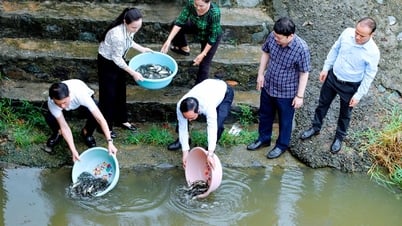



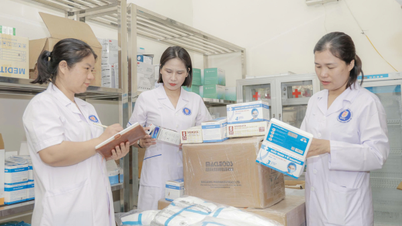
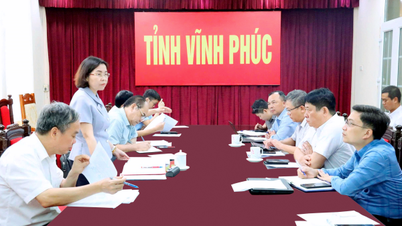





















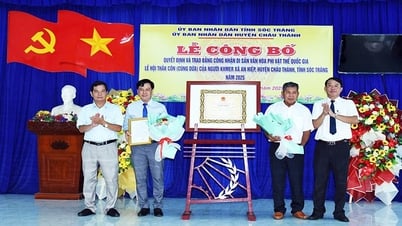


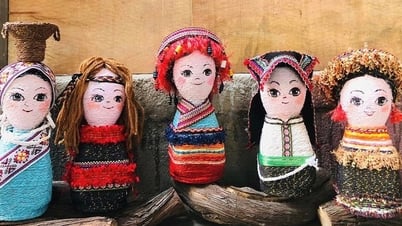
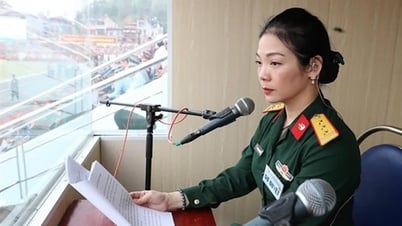





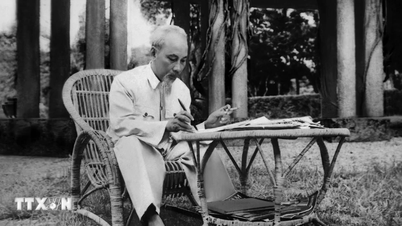


![[Maritime News] Wan Hai Lines invests $150 million to buy 48,000 containers](https://vphoto.vietnam.vn/thumb/402x226/vietnam/resource/IMAGE/2025/6/20/c945a62aff624b4bb5c25e67e9bcc1cb)









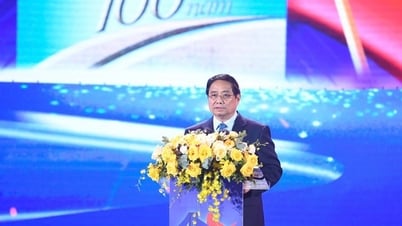

![[Infographic] Party Committee of the Ministry of Culture, Sports and Tourism: Marks of the 2020 - 2025 term](https://vphoto.vietnam.vn/thumb/402x226/vietnam/resource/IMAGE/2025/6/22/058c9f95a9a54fcab13153cddc34435e)






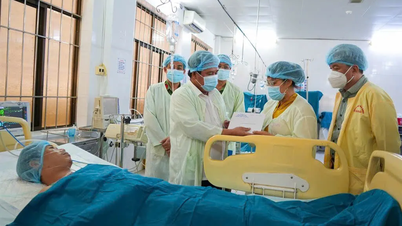




















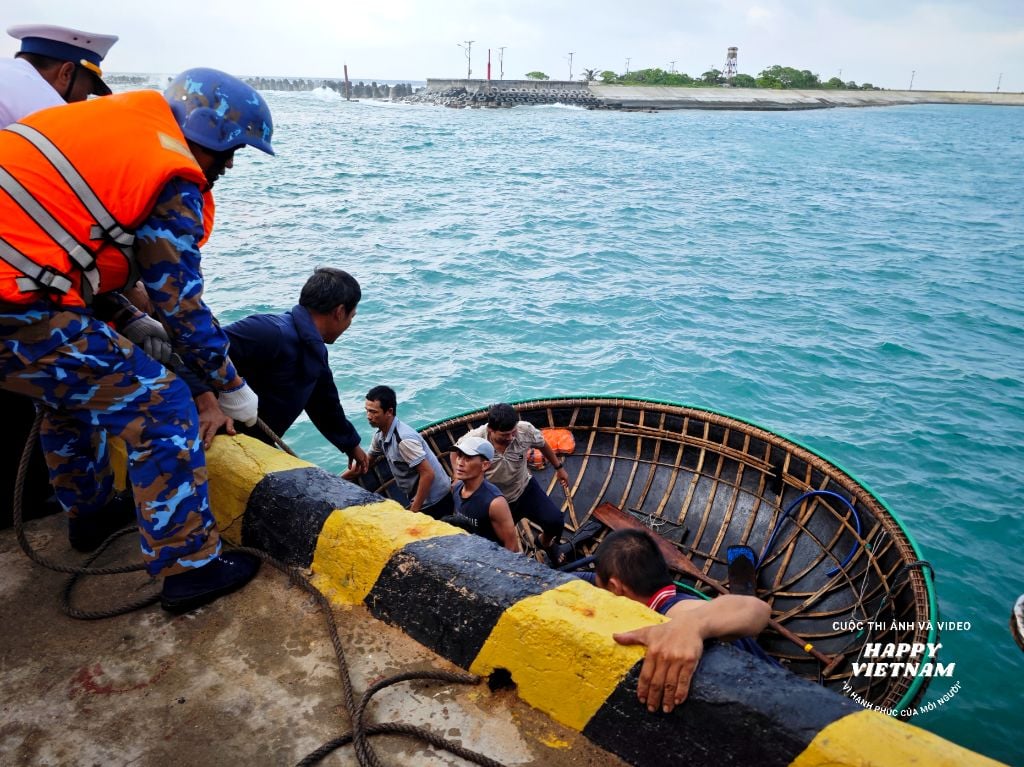
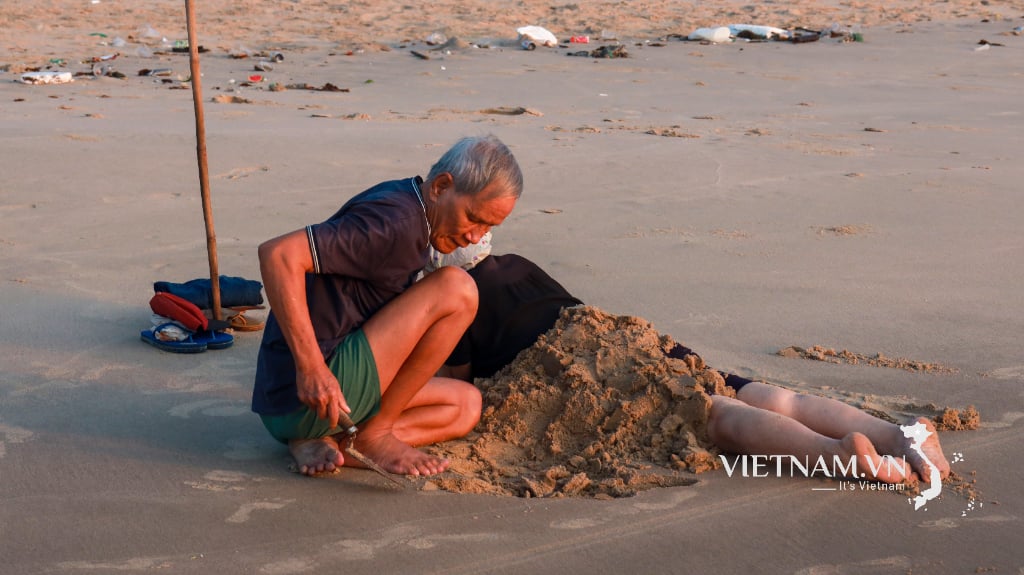

Comment (0)